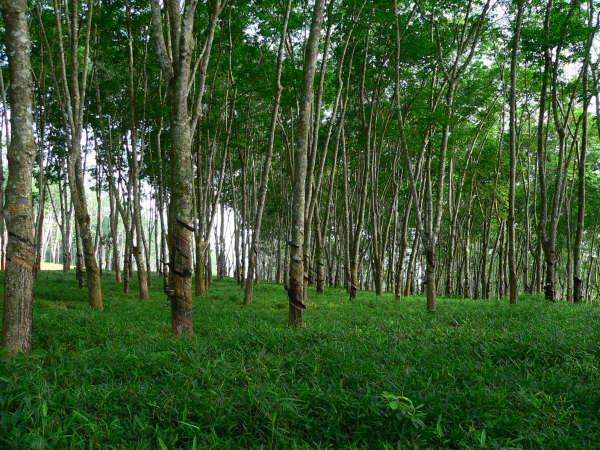The importance of fog in forest ecosystems has been recognized and debated for centuries. However, the extent to which the leaves of rubber plants can maintain net CO2 assimilation in the fog season is not known.
In a study published in Journal of Hydrology, researchers from Xishuangbanna Tropical Botanical Garden (XTBG) analyzed carbon/water flux data during 2014–2016 in a mature rubber plantation in Xishuangbanna. They compared the net ecosystem CO2 exchange, gross primary production, canopy evapotranspiration, crop water productivity, canopy conductance and transpiration rate under foggy and non-foggy days of cool dry (November-February) and hot dry (March-April) seasons to reveal the impact of fog on these carbon and water processes.
The analysis of 3 years of continuous observation showed that fog occurred during 42% of the total study period, and the majority occurred during the dry season, when the temperature was relatively low. The dense foggy days did not affect gross primary production, but decreased canopy evapotranspiration.
In addition to the low temperature, fog events were also associated with low vapor pressure deficit, atmospheric water potential, relative humidity and frequent wet-canopy conditions. Statistical analysis demonstrated that physiological parameters were mainly regulated by the concomitant changes of air temperature and vapor pressure deficit during cool dry foggy days.
The study suggests that low fog occurrence would cause greater dry season demand for groundwater in rubber plantations and decrease ecosystem crop water productivity.
“Our study highlights that during foggy days the rubber plantation utilized less water and thus increased the crop water productivity; therefore, the rubber farmers should implement canopy evapotranspiration -based adaptive irrigation management systems for better yield, particularly during the dry season of the non-foggy season,” said ZHANG Yiping of XTBG.
Contact
ZHANG Yiping Ph.D
Key Laboratory of Tropical Forest Ecology, Xishuangbanna Tropical Botanical Garden, Chinese Academy of Sciences, Mengla, Yunnan 666303, China
E-mail: yipingzh@xtbg.ac.cn

Rubber plantation in Xishuangbanna. (Image by XTBG)

